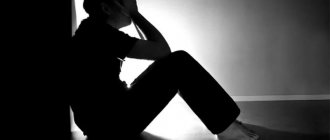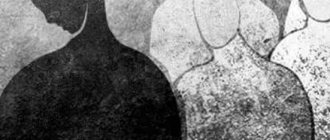The human psyche and body
Mental processes, and accordingly the body, change with age. Aleksey Nikolaevich Leontiev spoke about this, considering one periodization associated with the age and type of activity of people, which is the leading one:
- Infancy is emotional communication.
- Early childhood is an objective activity.
- School age - learning.
- The age of a teenager is communication with peers and participation in activities that are socially useful.
- Adolescence – educational and professional activities.
Causes of mental dysfunction
The most obvious causes are head injuries, tumors and other physical abnormalities. But it's not just about "physics". Disorders and shocks can also affect a person’s mental state. The integrity of the nervous system is at the forefront. There are several types of violations. Each of them has its own reasons and characteristic properties.
- Memory and attention disorders.
- Thinking.
- Works of consciousness.
- Personality disorder.
- Movements and coordination.
- Perceptions.
- Emotional state.
- Intelligence.
The influence of the psyche on the body “The connection between the body and the psyche”
Now let's talk about the characteristics that are associated with the psyche and the body.
Mental properties
These include character traits, temperament, abilities, personal qualities, etc. Now, so that you can understand what we are talking about, let’s look at examples.
Examples of human characteristics:
- Altruism.
- Politeness.
- Caring.
- Femininity.
- Mysteriousness.
- Collectivism.
- Independence.
- Sensitivity.
- Determination.
- Cleanliness.
- Humorousness.
- Equilibrium.
- Erudition.
- Perseverance.
- Selfishness.
- Good-heartedness.
- Coolness.
- Weak character.
- Smartness.
- Organized.
Personality qualities inherent in leaders:
- Respect for yourself and others.
- Excellent memory.
- Sanity.
- Decency.
- Demandingness.
- Literacy.
- Creativity.
- Hard work.
- Focus on results.
- Responsibility for your own words.
- Straightforwardness.
- Openness.
- Frankness.
Temperament is a combination of certain personality traits and qualities.
States
This is a characteristic of an individual’s picture of the world and norms of behavior, fixed over a relatively long period of time. The characteristics of mental states can be predicted.
- Emotional. Feelings experienced.
- Activation. An indicator of a person’s activity or passivity.
- Temporary. Duration of the condition.
- Tonic. They are similar to activation ones, only here we mean a specific moment - whether the person is cheerful or depressed.
5
There are four types of temperament
- Sanguine.
- Choleric.
- Melancholic.
- Phlegmatic person.
Choleric
Easily irritated and easily offended. It contains a sea of activity and passion, emotionality, thoughts and ideas. He is very sociable and cheerful.
Sanguine
A calmer person, balanced, non-conflict. He does not have such a quick reaction to the world around him as a choleric person, but sociability is present in him to almost the same extent. He has a lot of organization and endurance, patience and prudence.
Phlegmatic person
Sedentary, slow, cautious. Phobias (fears) often live in it, even if they are not “marked” by anything special.
Melancholic
The melancholic type of temperament is characterized by constant pessimism, dissatisfaction with everything in the world, tearfulness and vulnerability. But this does not mean that they are uninteresting and completely boring people: temperaments are as varied as a person.
Processes
The actions taking place in the human mind and the developed emotional reaction to external stimuli. The functions are largely the same.
- Regulatory
The other side of external perception. Develop principles of a behavioral system. Expression of will, motivation, goal setting. - Cognitive
Understanding of a specific situation from all possible angles and the ability to act in accordance with one’s idealistic ideas. These include perception, memory and imagination. - Communicative
The need to join forces with people to achieve a certain goal pushed primitive man to the invention of conscious communication.
4
Conclusions of psychologists
Psychologists are sure that there are no “pure” types of temperament. There is simply some kind of “dominance” of one of them over the other.
Then the combinations “phlegmatic - sanguine”, “choleric - melancholic” appear. When they combine, they seem to “complement” each other—with each other. Despite this “verbal game”, everything turns out quite seriously.
It is worth noting and noting: you do not need to completely believe in temperamental characteristics. Types of temperament are like horoscopes and omens: in some places they coincide and “come true” (come true), but in others only partially.
If you “live” only by trying on traits and qualities, life will become boring and very tedious. Diversity should be present in everything (at least to the minimum possible). No one has ever banned a person from believing in anything: if people believe without harming anyone, then there is nothing wrong with such faith. And temperament and horoscopes do not provide for any “sabotage” that threatens society.
Activity is another characteristic of the psyche and its processes. It characterizes: labor, activity, human actions.
Psychic phenomena
Psychology studies the foundation consisting of processes, properties and states of the psyche. However, not all processes are consciously realized by humans. According to scientists, self-consciousness cannot exist separately from the unconscious, superconscious, preconscious and subconscious. Unconscious processes, which are the first level of the psyche, such as breathing, reproduction, and often even automatic thinking are not “brought” to the surface so as not to overload the brain.
With their individual unconscious, people form the collective unconscious, that is, the history of the entire human race. It was first pointed out by Jung in his work “The Structure of the Soul.”
Name of the phenomenon
Description
7
Psyche and man
State of mind
- Affect.
- Inspiration.
- Dream.
- Trance.
- Hunger.
- Fear.
- Fatigue.
- Reactions.
- Mood.
- Tension.
The psyche is the connecting link between the human body and the environment. Consequently, the individual (person) is formed under the influence of the environment.
The “interweaving” of the body, psyche and the outside world gives us a unique opportunity to see how a person “creates” himself, how he develops, what he is capable of, what he breathes and lives, what he can do.
Thanks to the world, a person communicates with his own kind, exchanges experiences, teaches and learns. A person works, has fun, is sad, rejoices, cries and laughs... And he knows why he enters this or that state. Everything has its own explanations and reasons.
If a person behaves inappropriately in some way, this is a cause for concern.
Inappropriate behavior is:
- Beating people up for no reason.
- Murders.
- Rocking in the chair, strange shaking of the head.
- Pronouncing strange sounds.
In cases of deviance (deviations from the norm), we can no longer talk about mental states, but about its serious deviations.
Deviations may not appear from birth, but may be the result of some injury or illness. It happens that the psyche is disturbed due to some kind of shock (the death of a mother, the disappearance of a loved one, ruin or bankruptcy).
A person's appearance can say a lot
If a person’s clothing is distinguished by its unusualness and pretentiousness, catchiness, then this speaks of an artistic type of personality, of an artistic nature. There are people who neglect their appearance. After talking with them, you will easily understand whether this is his creative attitude to life or banal sloppiness.
It is important to know! Decreased vision leads to blindness! To correct and restore vision without surgery, our readers use the increasingly popular ISRAELI OPTIVISION - the best remedy, now available for only 99 rubles! Having carefully reviewed it, we decided to offer it to your attention... Read more..
If a person is dressed to the nines, as if he just stepped off the catwalk, this often means that he wants to establish himself with his clothes. This is a sign of inner uncertainty and helplessness.
A person’s appearance should be in harmony with clothes and complement the image. Schizoid personality types do not adhere to this principle.
Bright colors in clothes are loved by emotional and loving people, while half-tones are loved by calm and balanced people. Often people who have a hard time getting used to and adapting to new circumstances wear clothes that are out of season.
Handshake
A handshake is a common form of introduction for men. If a person comes to you from afar with an outstretched hand, then we can say that he is cheerful and sociable, does not hide anything behind his soul. If he is still actively shaking your hand and speaking quickly, he is an active, energetic person.
Secretive people usually shake hands with the palm down and with a large bend in the elbow. This movement seems to say “I won’t give anything away.” Often such people turn out to be two-faced and ruthless. If your palm seems to be pressed down, then you have a domineering, suppressive and callous personality.
A limp handshake speaks of laziness and lack of initiative. Shy and modest people shake hands awkwardly.
Communication zone
Human psychology helps to recognize unpleasant and annoying people by their behavior.
Aggressive and unceremonious people are unpleasant to communicate with. They often violate the permissible distance. You feel this subconsciously. They may tap you on the shoulder. Hold your hand for a long time or look into your eyes. If an unfamiliar person approaches you very close, less than 50 cm, then this causes a desire to move away, as well as anger and indignation.
Shy, insecure people keep a long distance.
The longer people communicate and become closer to each other, the distance between them decreases.
Posture, gait, gestures and facial expressions
Human psychology in terms of behavior and gestures is not always as simple and unambiguous as it might seem at first glance.
Since a person is raised from childhood to adhere to certain rules and norms of behavior, it is sometimes very difficult to determine a person’s character. For example, it is difficult to judge by a smile what is happening in a person’s soul, because it can be real or “through tears.”
The duality of human nature also makes it difficult to understand him. If a person is gentle and reliable, but does not want to seem like that, then he will accordingly behave differently and control his actions.
In order to understand body language, it is involuntary, unconscious movements that play an important role.
If a person has an asymmetrical face, then you can tell. That the rational and the emotional are at odds with each other. When there is a constant internal struggle, remorse, it is very reflected on the face.
If a person has an unnatural, stiff gait (that is, the legs, pelvis and lower back seem to be tightly connected to each other), this indicates problems in the sexual sphere.
Tension or relaxation of movements plays an important role. When a person is relaxed, he rests his soul and is open to the perception of others.
The psychology of human behavior helps to determine character traits based on the following basic characteristics:
- Carelessness and lack of discipline are manifested by a loose gait and relaxed postures;
- Uncertainty and fearfulness are expressed in closed postures of arms and legs, hands in pockets or covering part of the face. Also, redness and an intermittent voice indicate a person who is unsure of himself. These people tend to constantly hype themselves up and make mountains out of molehills;
- Nervousness and anxiety are indicated by rhythmic movements of the fingers. Handling objects, fidgeting in a chair.
- A wide and slow gait speaks of a person who wants to show off himself. And the theatricality of gestures speaks of inflated self-esteem;
- Straightforward and restrained movements speak of a cold, calculating nature;
- Sudden and disordered movements indicate irritability and nervousness;
- If body movements are rounded and smooth, this characterizes a person who is emotional and has a carefree attitude towards the world.
Eyes and gaze
Eyes reflect the inner world of a person. They are the first to react to their internal state. When we are sad, sadness appears in our eyes. If we are having fun, then our eyes shine with happiness.
The look also varies. For example, hard, prickly, cold, angry, shameless, affectionate, gentle, gloomy, cunning, stubborn, confident, fierce, excited...
Any communication is accompanied by a glance. If normal, calm communication occurs, then the look will be the same. If the gaze goes into the distance, it means the person is distracted or lost in thought. A sideways glance expresses distrust and secrecy. Squinted eyes express distrust, anger and vindictiveness of nature.
Politicians often see this pattern when one eyebrow is raised. But the folds on the forehead remain horizontal. This speaks of a strong will, neglect and hostility towards the outside world.
Looking down from above speaks of arrogance and contempt. Conversely, the view from below is about subordination and helpfulness.
A long, direct and firm gaze indicates that the person wants to subjugate you to his will. This is how investigators and prosecutors look during interrogations.
A “running” gaze characterizes people who feel fear or threat. Such eyes are often found in criminals who have spent a long time in prison, as well as scammers.
How to make your psyche more stable?
In order to make your psyche more stable in stressful situations, you must follow the following rules:
- develop intellectual abilities;
- always maintain confidence in your abilities;
- do not enter into arguments with unpleasant people;
- make decisions based on potential pros and cons;
- if you receive an unfavorable offer, you must always be able to refuse;
- do not allow fear to take over your mind;
- be able to accept defeat, perceiving it as the beginning of a new activity;
- do not dwell on mistakes already made;
- do not suppress your emotions;
- always keep yourself in shape, strengthening not only the psyche, but also the musculoskeletal system;
- provide the body with proper rest, avoiding physical and mental fatigue;
- limit the consumption of caffeine, alcoholic beverages and tobacco products.
The human psyche is a complex concept that is studied in separate branches of psychology, medicine and philosophy. The psyche itself is a set of continuous mental processes and physiological phenomena associated with sensations, positive and negative emotions, perception of the environment, and the ability to remember and accumulate useful information.
The psyche has its own unique structure, which includes mental processes, neoplasms and conditions. People with satisfactory mental health have the ability to adapt to any living conditions, come out of stressful situations stronger, and are able to make volitional decisions without violating generally accepted behavioral norms.
Classification of psychosomatic disorders
Scientists divide the manifestation of psychosomatic disorders into the following categories:
- Psychosomatic reactions. They do not need any correction, they have a short-term, situational nature (redness from shame, loss of appetite in a bad mood, sweating of the palms when stressed, a feeling of “chill” on the back and trembling from fear).
- Psychosomatic disorders. A violation of one or another body function develops. They are divided into the following types:
- Conversion symptoms. There is a transformation of emotional experience into a bodily symptom: a hysterical lump in the throat;
- psychogenic blindness/deafness;
- numbness of the limbs.
- cystalgia;
- hypertonic disease;
In the light of modern research, the Chicago Seven was officially supplemented by the following diseases that occur against the background of neurotic disorders:
- oncological diseases;
- panic disorder;
- sleep disorder;
- heart attack;
- irritable bowel syndrome;
- sexual disorders;
- obesity;
- Anorexia nervosa/bulimia.
What psychological reasons lead to disturbances in the body's functioning?
The psychological causes of diseases are comprehensively considered by esotericism - the doctrine of the relationship between the physical and energy worlds. The esoteric view of man suggests that diseases can be diagnosed at an early stage and their occurrence can be prevented if the mechanism of occurrence is understood.
The connection between soul and body in esotericism
To understand the cause-and-effect relationship between illness and the body, one should imagine a person in two planes: material and energetic.
The physical body is necessary to contact with the world around us: to see, feel, touch. The spiritual body is a conductor of emotions and thoughts, receiving energy flows. The two bodies are connected and constantly influence each other. Physical activity takes energy from the spiritual body, and the energy generated in the spiritual body passes into the physical body. Energy comes from emotions. Positive and negative, they have equally strong effects on the body. Positive energy nourishes and gives vitality, while negative energy punches holes in the energy shell, causing disruptions in the body’s functioning. The spiritual body cannot get rid of negative emotions on its own; they inevitably end up on the physical level. The longer a person accumulates negativity, the stronger the diseases will take root.
The origin of disease in the body: the influence of thought forms
According to esoteric beliefs, illness is a projection of thoughts and emotions. Fear, joy, anger, apprehension, hope are combined into energy flows - thought forms. Positive emotions create light currents that easily pass through the mental body and fill the physical body with useful energy. Negative emotions are heavy, they create viscous clots, settling on the spiritual body and preventing positive energy from reaching the physical body.
Positive energy can dissolve negative energy, but only if there is more of it. Lack of light energy leads to exhaustion of the spiritual body. It cannot protect the physical from negative influences, nourish and support.
Causes of diseases in esotericism: physical manifestation of negativity
At first, the symptoms are minor: mild pain that goes away quickly, fatigue, itching, tingling.
People tend to ignore such manifestations or treat them with medications without understanding the true cause. Pills may relieve symptoms, but the disease will continue to develop. To cure it, you need to find and remove the energy blockage that is preventing access to vital energy. Diseases in esotericism have a clear nature. They are not chaotic: problems in certain organs indicate a specific problem. Among the psychological causes of diseases in esotericism there are:
- Distrust of life. Occurs as a result of childhood trauma. Having experienced insult and injustice, the child withdraws, loses the ability to trust and rely on help. Finding himself in a difficult situation, he is lost and afraid to act. At the physical level, mistrust is manifested by kidney disease.
- Lack of positivity and joy. Positive emotions help cleanse the body, while negative emotions fill cells with toxins and interfere with regeneration. Overwhelm with negativity causes anger and anger. The physical reflection of anger is liver disease.
- Fear of moving forward. Getting stuck in a problem, unwillingness or inability to find a way out feels like stagnation of energy. Often manifested by causeless fatigue and depression. At the physical level, it is manifested by blood pathologies: high blood pressure, anemia, thrombosis.
- Refusal to perceive reality. The inability to accept certain phenomena of life, the fear of change and novelty is felt as a slight chill, an unpleasant feeling of goosebumps. The physical manifestation of fear is stomach illness.
Esotericists are confident that any pathology can be corrected by changing your attitude towards life. First, a person must accept responsibility, understand that only he is responsible for his emotional reactions, and learn to manage them. By observing your emotions, you can accurately determine in which part of the body the problem is hidden.
The basis of energy healing is changing negative thinking to positive thinking. Giving up negative emotions will clear the energy channels and allow vital energy to flow through the body unhindered.
Look at yourself to understand yourself
How does the body contribute to the formation of trauma? How do we understand whether we have it or not?
There is a point of view in trauma therapy: you need to look at what happens to a person at the level of the body when he seriously, not “tangentially,” begins to remember the events he experienced.
- If he talks about them calmly, perhaps the trauma has not formed, or it has already been experienced. The difficult event has become a fact of biography, it is behind us.
- But when the trauma is alive, something different happens: the narrator becomes immersed in memory of the event, and his body displays symptoms of trauma activation. There are four of them: helplessness, dissociation, hyperarousal, compression.
Maybe not all four will appear at once, but some of them will definitely appear.
Moreover, the time that has passed since the traumatic event does not matter: it could be one day or 20 years. Trauma can be stored in the “basement of the subconscious” for decades
And what’s amazing is that she “knows” in whose presence she can “come out of the shelter.” This is an amazing thing!
Trauma can be stored in the “basement of the subconscious” for decades. And what’s amazing is that she “knows” in whose presence she can “come out of the shelter.” This is an amazing thing!
It happens that a person moves from therapist to therapist until he finally feels: “Now, with him I can live through this trauma.” And trauma comes out of the “freezer”, sometimes very unexpectedly, like an explosion.
Helplessness. The key thing, a powerful factor in the formation of trauma
That child who tried to get out from under the rubble was not helpless, this is important. I may be very scared, but I'm not powerless
Even “giving it a go” is better than giving up - at least you did something!
Helplessness can manifest itself both emotionally and physically.
Dissociation or splitting. I separate myself from my experience.
For example, a person can talk with an absolutely calm face about the most difficult event he suffered, put forward 33 theories, give 5 “floors” of reflection and 10 quotes from different authors, philosophical and anthropological background... but no emotions. Separately - the head, separately - everything else.
Or he may not feel some parts of the body, for example, often “no” shoulders or hips. Or there is no sense of body symmetry. The holistic sense of the body is impaired.
Hyperarousal always accompanies a situation of danger. The one who ran or attacked realized his hyperexcitement and discharged its powerful energy. This is why activity is so important!
If the person “froze,” then the energy discharge did not occur (and the hyperexcitation did not go away, but remained in the body).
And the last reaction is compression. Also a mandatory occurrence in case of injuries. Do you remember the child’s reaction to the constantly heard “Stay out of the way!”?
If his reaction was not flight or attack, there was no dynamics of the experience, then the compression remains, giving rise to somatic problems in the future.
Philosophical approach
Other experts go further and argue that psychosomatic illness is a kind of signal that a person is leading a lifestyle that is not just right, but not suitable for him. They classify such a disorder as a mystery thrown up by life itself, the answer to which will be the key to healing.
Still others try to approach the question of what illnesses mean from a philosophical point of view and argue that a psychosomatic disorder is a teacher. Therefore, it should not be denied, but listened to, learning valuable lessons that are presented to the patient in the form of a disease.
In general, all experts agree that psychosomatic disorder is symbolic in nature. The psyche uses our body as a canvas on which it draws a pattern of a particular problem in the form of a disease in order to show a person about his psychosocial conflicts that he cannot solve or to which he does not pay attention.










